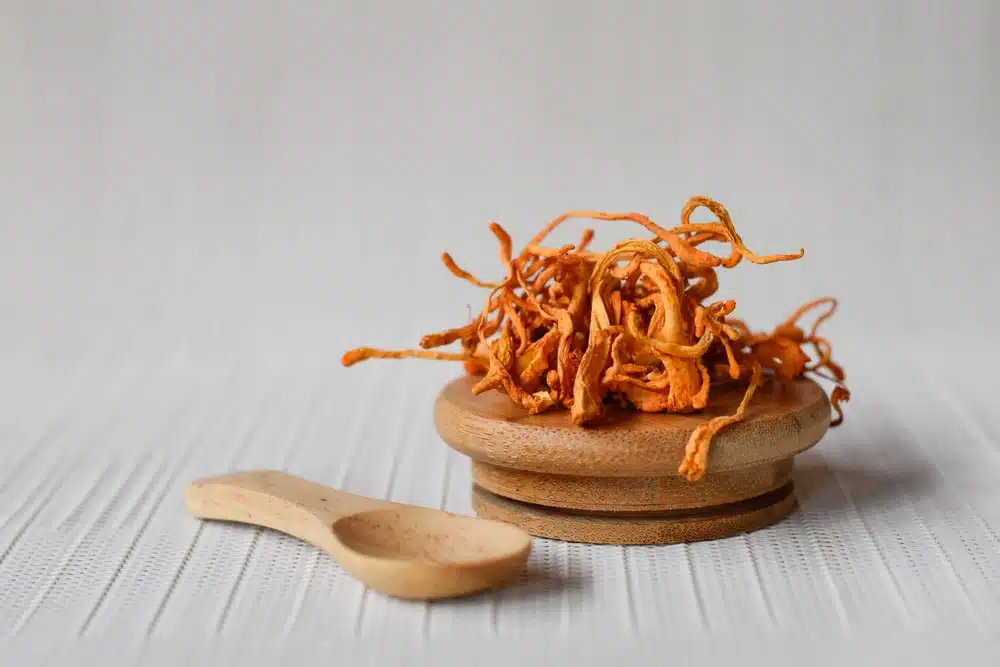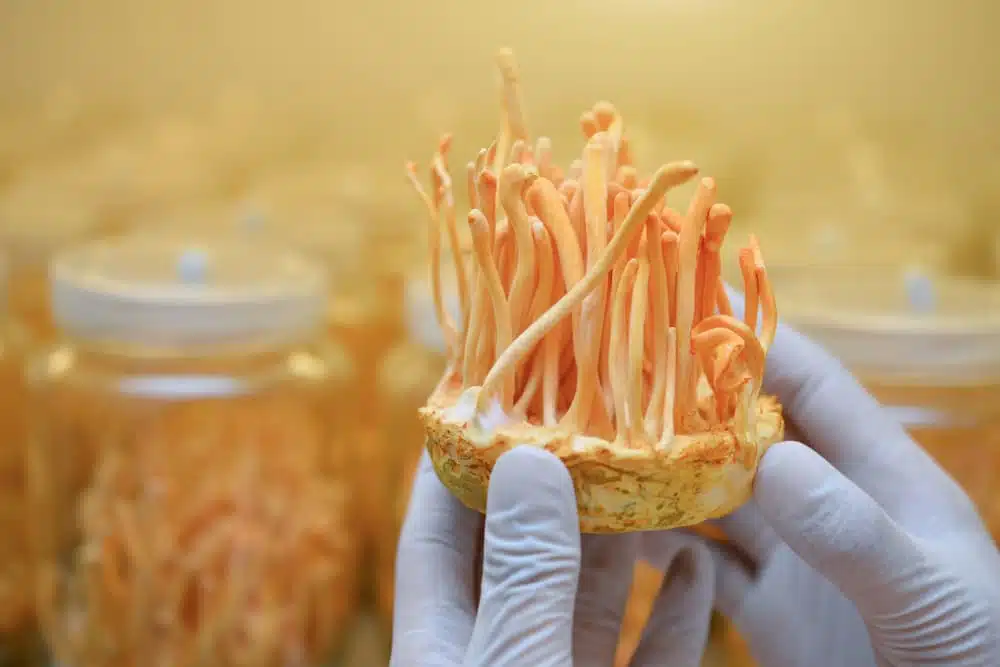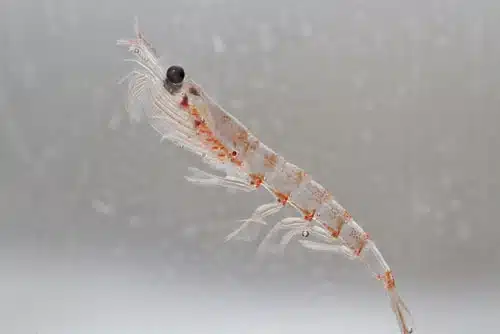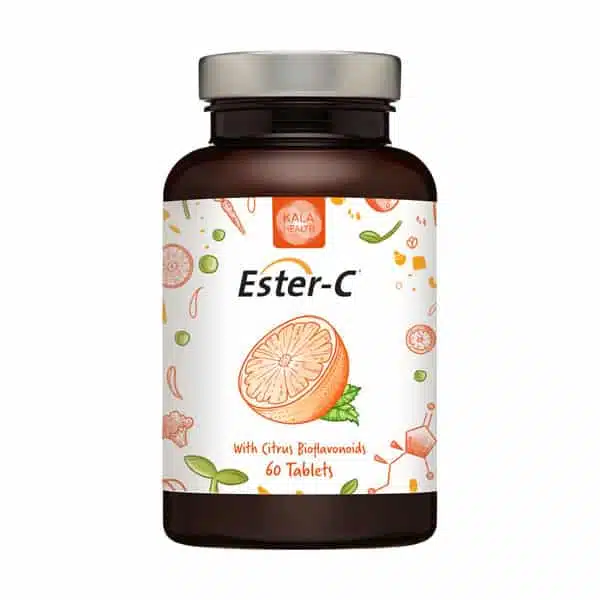You might be wondering: What is the best omega-3 supplement on the market UK right…

Caterpillars with Cordyceps: are they still being used?
You might be wondering: are caterpillars with cordyceps still being used? Our experts at Kala Health will answer that question in the text below. To start off, we would like to tell you a bit about this interesting mushroom.
Caterpillars with cordyceps: origin
“Cordyceps” is the name of the mushroom Cordyceps sinensis. For thousands of years Cordyceps has been known as the mysterious organism with the amazing ability to transform itself into a plant and then back again into an animal. The Chinese had given it the name “dong chong xia cao”, or “winter worm, summer grass”. Science has revealed it is not one organism, but a complex, parasitic relationship between two organism: a caterpillar and a fungus. Caterpillars with cordyceps: are they being used?
The latin name “Cordyceps” means ‘swollen head’, and directly refers to the growth of the fruiting body on the caterpillar’s head. For your reassurance at this point: Kala Health Cordyceps capsules contain mycelia and organic rice only, no caterpillar is used in the culture. So no, at least in our production caterpillars with cordyceps are not being used. Our product is 100% vegan.
Caterpillars with cordyceps: winter worm
Cordyceps sinensis is a rare mushroom, found primarily at 3000 – 5000 meter altitude on the Qinghai-Tibetan plateau in the Himalaya. The fungus is parasitic, growing on and deriving nutrients from several species of caterpillar, although primarily that of the moth Hepialus armoricanus, which lives 15 cm underground and feed on plant roots. In late autumn, chemicals on the skin of the caterpillar interact with the fungal spore and release the fungal mycelia which then interact with the caterpillar (‘winter worm’). By early summer of the following year after raise of temperature and melting of the snow, the fungal infestation has killed the caterpillar and the fruiting body can be seen protruding from the caterpillar’s head (‘summer grass’) (1).
Caterpillars with cordyceps: are they being used?
The latin name “Cordyceps” means ‘swollen head’, and directly refers to the growth of the fruiting body on the caterpillar’s head. For your reassurance at this point: Kala Health Cordyceps capsules contain mycelia and organic rice only, no caterpillar is used in the culture. So no, at least in our production caterpillars with cordyceps are not being used. Our product is 100% vegan.
Caterpillars with cordyceps: Sexuality and Fertility
Cordyceps sinensis has a an outstanding reputation as an aphrodisiac for both men and women, especially when sexual desire decreases with increasing age. Cordyceps has been shown to improve the biosynthesis of steroid hormones like cortisone, testosterone and estrogens. The production of these hormones usually decrease with increasing age.
For long Cordyceps has been use to improve fertility of both men and women. Scientists have consider Cordyceps an effective ingredient to improve fertility of women and increase the success rate of In Vitro Fertilisation (IVF). In Vitro research has shown Cordyceps has a dose-dependent stimulating effect on the production of the female hormone 7β-oestradiol by the ovary, by up regulation of enzyme expression, in particular STAR (steroidogenic acute regulatory protein) and aromatase. Increasing evidence shows 17β-oestradiol has a direct influence on the quality of maturing egg-cells a and thus on the outcome of IVF treatment.
Caterpillars with Cordyceps: why freeze dried is the best
Much of the cordyceps available today is not wild Cordyceps, but cultured Cordyceps grown on a substrate like rice. Research has shown Cordyceps mycelia contain the same ingredients as the fruit body found in nature.
Cordyceps usually is offered as an water/alcohol extract, or as an untreated freeze dried powder of mycelia grown on rice. A water/alcohol extract has the advantage of standardizing on certain ingredients. However, many other ingredients get lost and until today it is believed the biological effect of Cordyceps is due to a synergetic effect of all ingredients, rather than to one or two specific ingredients. Untreated, freeze dried powder has the advantage of offering all ingredients in the way mother nature intended.
In a recent androgen study it was confirmed that untreated Cordyceps powder (administered in a dosage of 20 mg per kg body weight) raised the level of testosterone better than different Cordyceps extracts.
Caterpillars with Cordyceps: The importance of organic cultivation: SKAL certified
Because mushrooms reflect the environment in which they grow, their quality is of the utmost importance. Mushrooms are capable of absorbing and converting almost all substances from the soil, both valuable and potentially harmful ones. Mushrooms that grow in a polluted environment can therefore absorb dangerous soil contaminants. This is why Kala Health does not use wild mushrooms from uncontrollable areas in uncontrollable countries.
Kala Health Cordyceps instead comes from a nursery in one of the cleanest areas in the northwestern United States. Cultivation takes place on a nutrient medium of organic rice, under completely sterile conditions. Valuable nutrients in the organic rice are absorbed by the mushrooms. The crop is harvested as soon as the mycelium (fungal threads) have overgrown the rice. After drying and grinding, the powder is shipped to and encapsulated by Kala Health.
The nursery is certified Organic by the Washington State Department of Agriculture, and Kosher certified by the Union of Orthodox Congregations of America. The mushrooms are guaranteed to be free of heavy metals, pesticides, chemical residue and bacteria. To ensure this, crops are regularly analyzed by an independent laboratory. For the EU, the Kala Health Cordyceps product has been awarded the SKAL Organic certificate.
Literature:
1.Jones K: Cordyceps, Tonic Food of Ancient China. Sylvan Press, Seattle, 1997; 50 ff
2.Halpern GM: Cordyceps, China’s Healing Mushroom. Avery Publishing Group, New York, 1999; 116 ff 3.Stamets P, Wu Yao CD: Mycomedicinals, An Informational Booklet on Medicinal Mushrooms. MycoMedia, Olympia WA, 1998; 46 ff
4.Zhu JS, Halpern GM, Jones K: The Scientific Rediscovery of an Ancient Chinese Herbal Medicine: Cordyceps sinensis. Part 1. Journal of Alternative and Complementary Medicine, 1998; 4(3):289-303
5.Zhu JS, Halpern GM, Jones K: The Scientific Rediscovery of a Precious Ancient Chinese Herbal Regimen: Cordyceps sinensis. Part 2. Journal of Alternative and Complementary Medicine, 1998; 4(4):429-457 6.Seu-Mei Wang, Li Tjen Lee, Wan-Wan Lin, Chun-Min Chang: Effects of Water-Soluble Extract of Cordyceps sinensis an Stroidogenesis and Capsular Morphology of Lipid Droplets in Cultured Rat Adrenocortical Cells. Journal of Cellular Biochemistry, 1998; 69:483-489.






